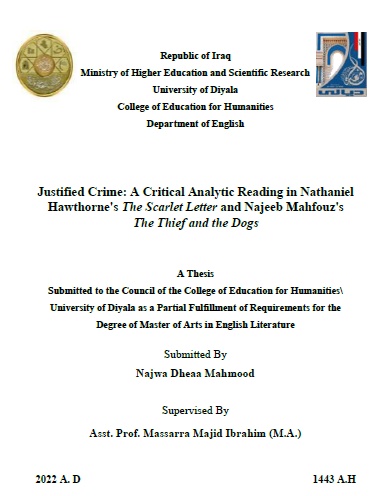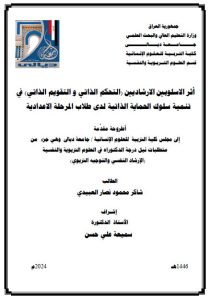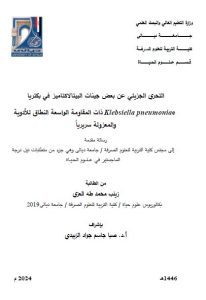اعلام المكتبة المركزية / المهندس مهند
Abstract
Crime is as old as human beings. Adultery and theft are the most major crimes that appear as issues in society as well as in literature. For many years, they have been used as vital subjects in different literary genres. On the one hand, adultery is directly associated with the first brick in life's building representing marriage. It can also result from divorce. Adultery is a moral crime that has consequences for all those involved. It creates a conflict between the human's consideration, their sexual desires and a sense of loyalty. On the other hand, theft is a difficult subject to tackle because of the complexities of its causes and consequences as it affects everyone in society. As a crime against property, it may involve threats or force. There are many causative factors for theft, including economic inequality, social integration, and economic deprivation.
The current thesis attempts to analyze crimes, namely "adultery" and "theft," depicted in Nathaniel Hawthorne's The Scarlet Letter (1850) and Najeeb Mahfouz's The Thief and the Dogs (1961), respectively, and justify them in the light of Merton's anomie theory. Anomie is an eminent criminological theory. It has emerged as an analytical tool to investigate social and cultural factors that influenced normative regulation and deviant behaviour rates over the last few decades. The criminal conducts of those characters are analyzed to show how both writers justify the crimes mentioned above to change reality or to take revenge. "Adultery" and "theft" as crimes create certain dilemmas for their perpetrators because they confront the consequences of these illegal acts in different ways. Thus, Hester Prynne and Saeed Mahran are seen at odds with society, the magistrates, and their spouses.
However, the current thesis falls into four chapters. The first chapter is an "Introduction". It is subdivided into three sections. The first section provides introductory materials on crime and criminology. The second section examines justification of criminal conducts according to anomie theory, first proposed by Durkheim and later developed by Merton, its definition, aspects, and adaptations. The third section is a literature review.
The second chapter entitled "Criminal Behaviors and Conducts in Puritan Society: Hawthorne's The Scarlet Letter". It is subdivided into three sections, with an introduction to the chapter. The first section provides full biographical details of Nathaniel Hawthorne, while the second section provides background informations about Puritanism. The third section of this chapter critically analyzes adultery in Hawthorne's The Scarlet Letter (1850). It also sheds much light on adultery's causes and justifications in the light of anomie theory.
Chapter three, entitled "The Aspects of Criminality in Najeeb Mahfouz's The Thief and the Dogs", is subdivided into three sections, with an introduction to the chapter. The first section deals with Najeeb Mahfouz's life and writing careers as the first and only Arabic writer to be awarded the Noble Prize for Literature in 1988. The second section deals with the 1952 Revolution and its impact on Egyptian society. At the same time, the third section tackles theft in The Thief and the Dogs (1961). It also investigates different causes of "theft" and justifications in the light of anomie theory.
Finally, chapter four is the conclusions, in which the researcher briefly explains the main points resulting from the thesis and recommendations.





